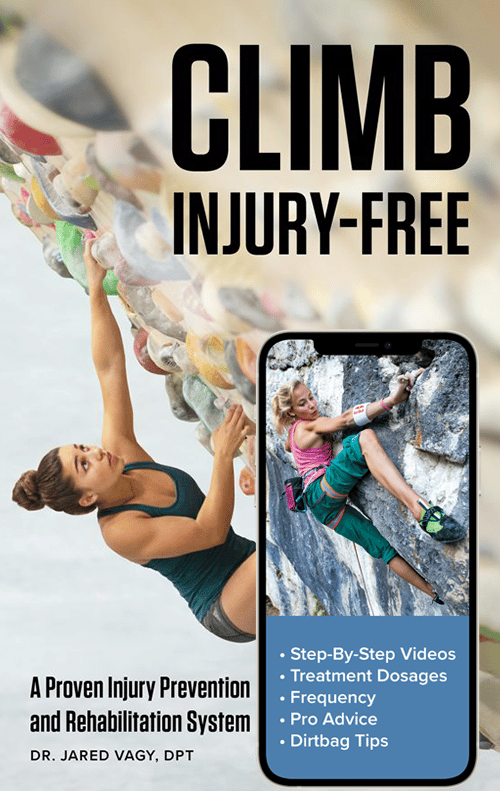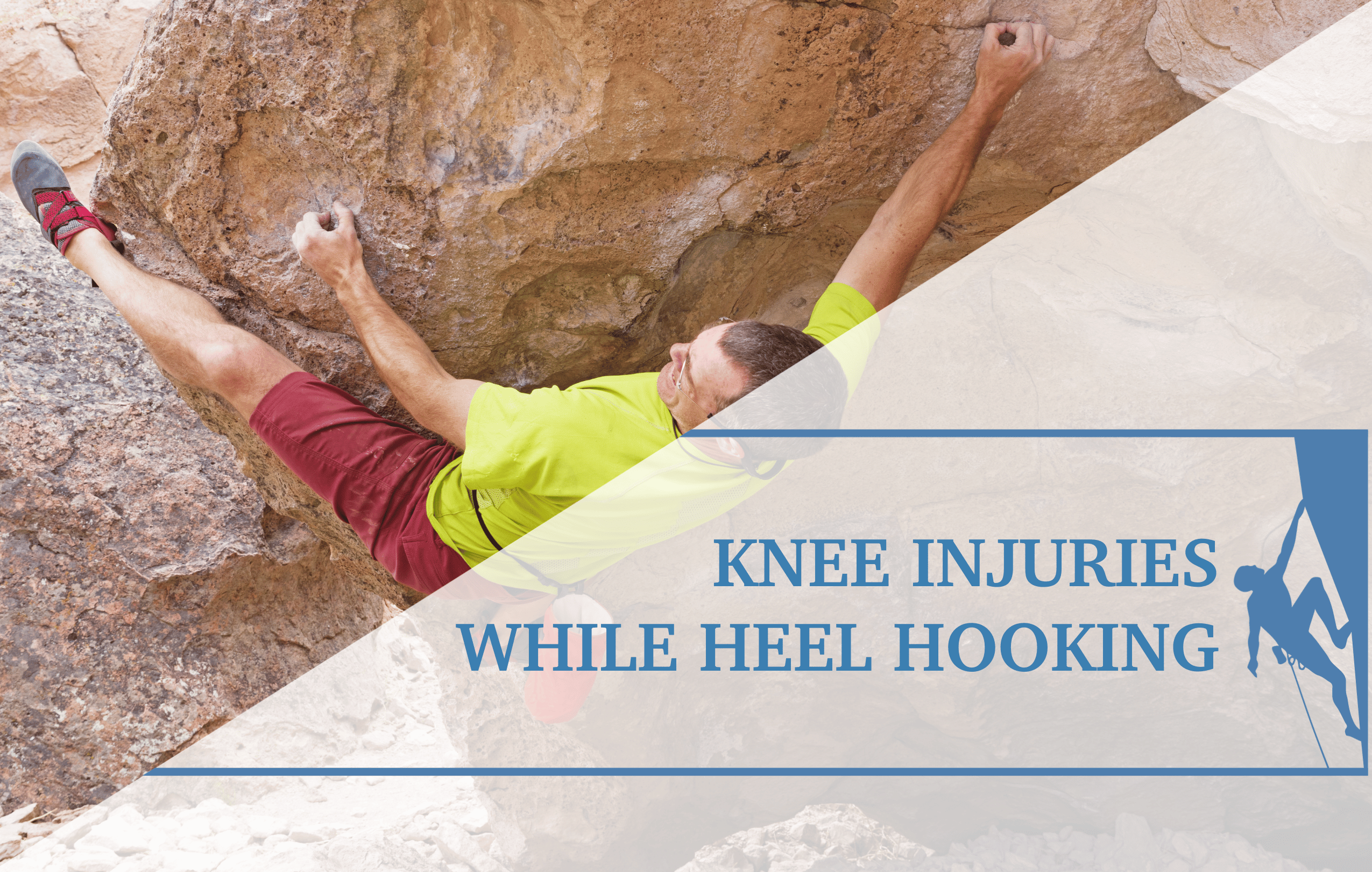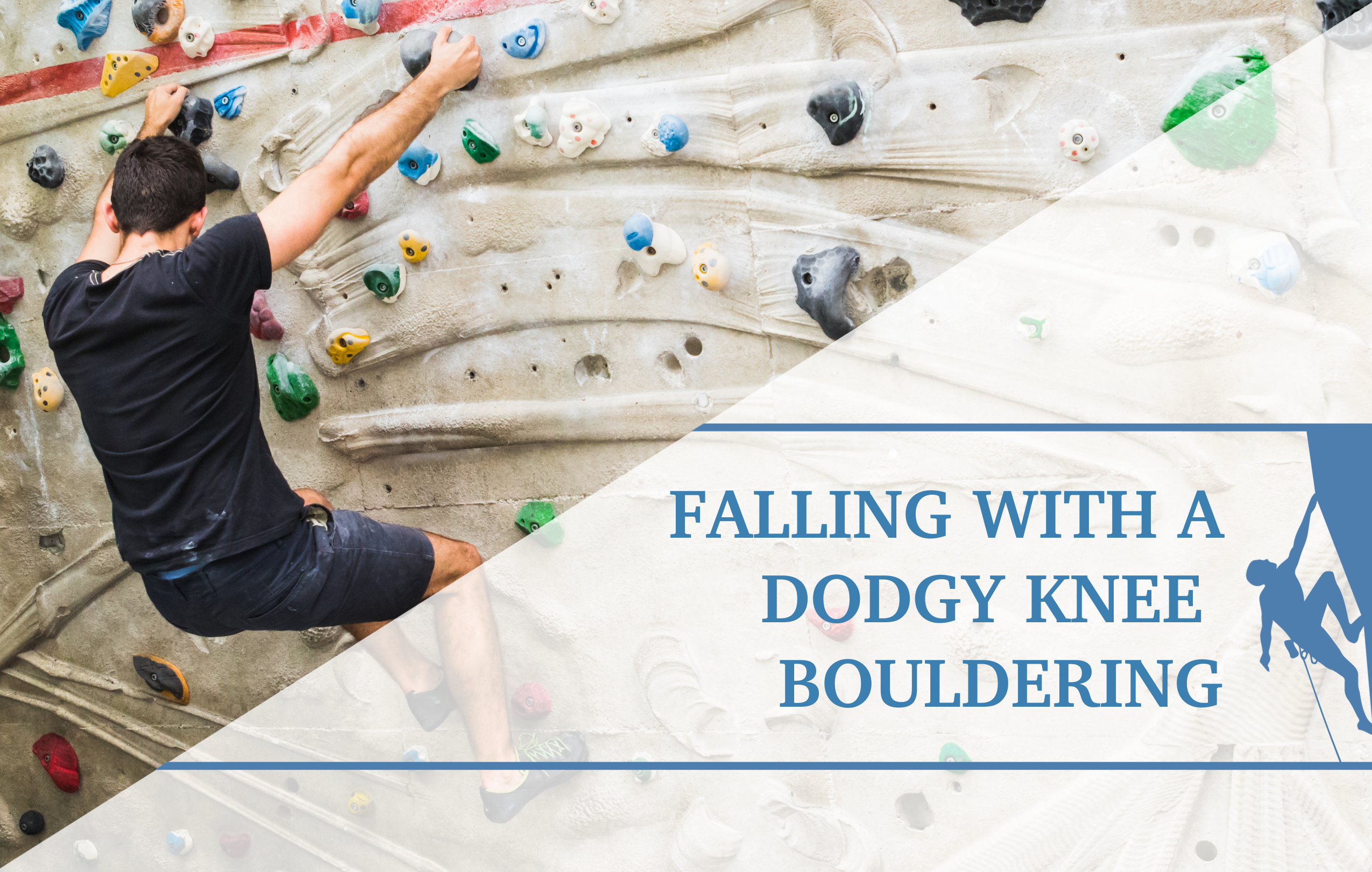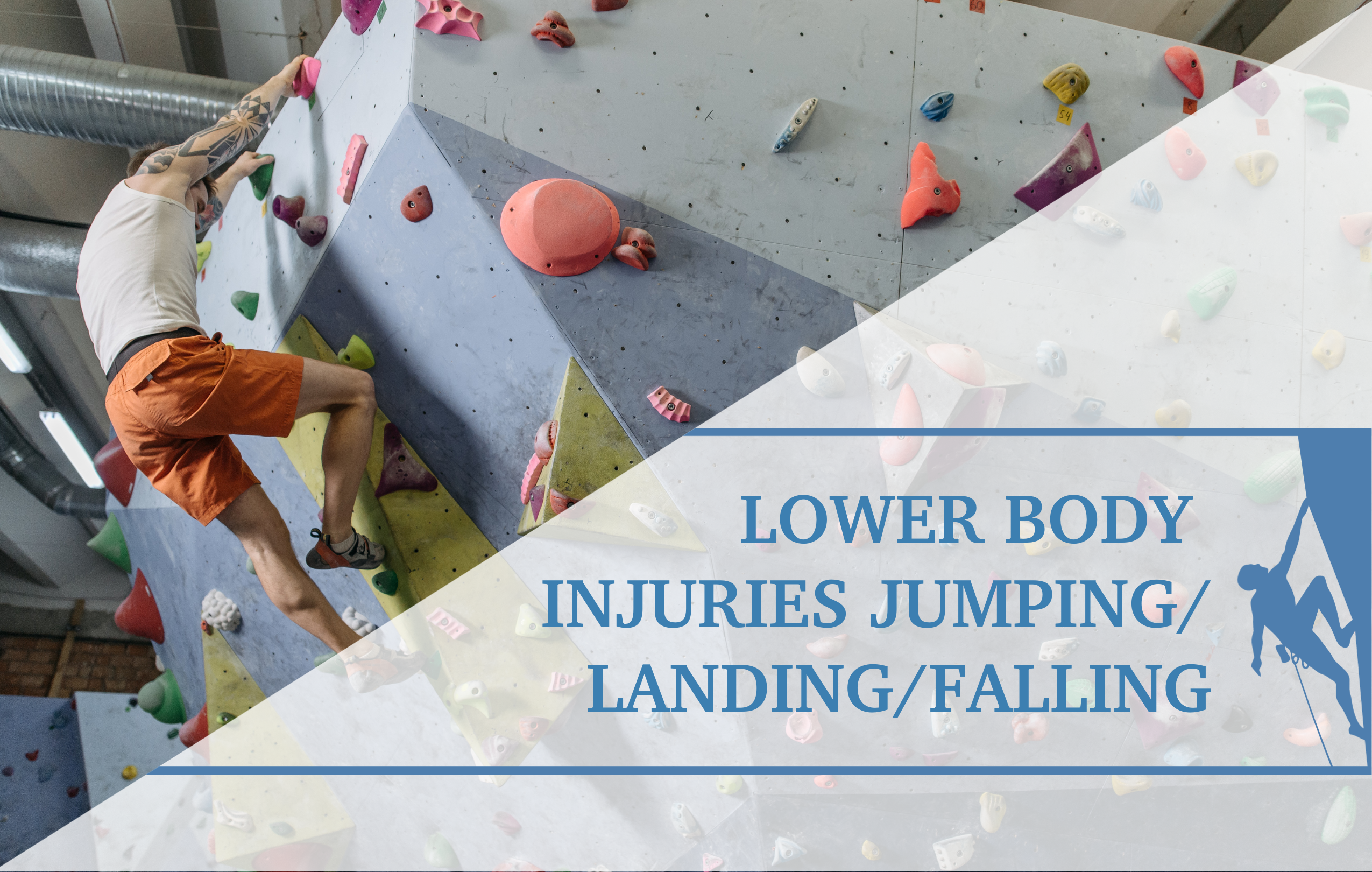Knee Injuries in Rock Climbers
Three years ago I was halfway through a pumpy, overhung 5.12 in central Texas. I had just done around 20 moves and the pump was approaching rapidly. I sunk a bomber heel toe-cam on the same flat jug rail my hands were on to shake out my forearms before the finishing crux. While I was resting I heard a crackling noise in my knee, but I thought nothing of it because I was so focused on sending the route. I came out of the resting position and attempted to power through the crux, but unfortunately fell short on the last move. When I was back on the ground I felt pain inside my knee. I had partially torn my meniscus. For several weeks after, my climbing was severely limited, and I still get flare-ups to this day when doing more aggressive heel hooking.
As climbers, we tend to neglect the Lower half of our bodies and don’t think about potential injuries to our legs until they happen to us. Studies report that up to 10% of total injuries among climbers are knee injuries.1 Knee injuries can take athletes out of climbing for weeks to months and should not be overlooked.
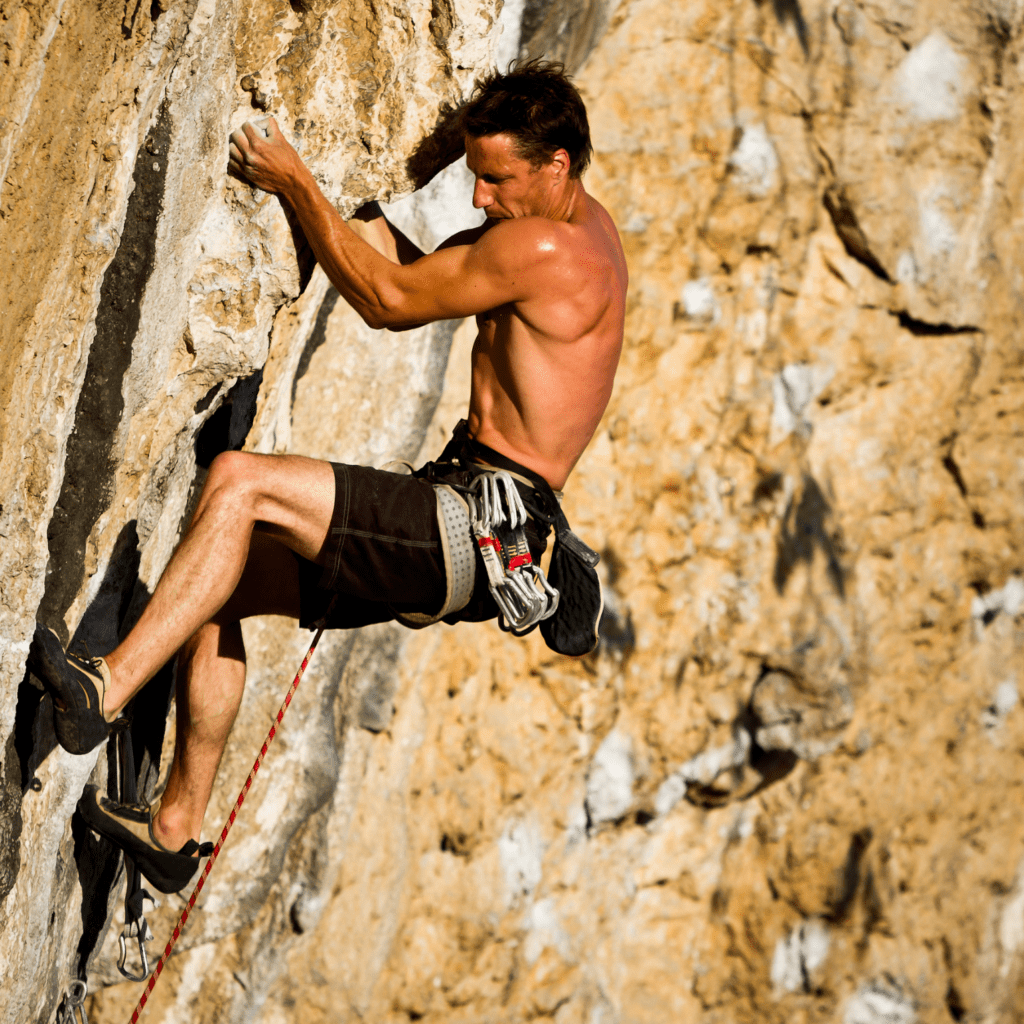
This article explains what structures are most commonly injured from different movements as shown in recent research.2
It can serve as a guide for rehabilitation. Each injury is unique and this article is by no means a substitution for an evaluation by a licensed physical therapist. Please see a physical therapist for a proper evaluation/treatment.
The following information is in part from a study looking at 71 climbers who sustained knee injuries investigated the mechanism of injury (MOI) along with the body structure damage= which can serve as a guide in the case of a knee injury. To begin, start by finding your mechanism of injury (i.e. heel hook, drop knee, etc.). Then look at each injury site and see which of the sites has the most similar symptoms to your injury. Then scroll down for treatment recommendations on that specific injury.
MECHANISM OF INJURY
Injury From a Heel Hook2
IT Band Sprain (48%)
Symptoms
- Pain on the lateral(outside) aspect of the knee that is aggravated by heel hooking or other climbing specific movements.
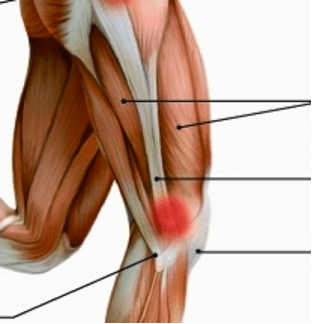
Medial Meniscus (23%)
Symptoms
- Joint line tenderness
- Pain from “inside the knee” during heel hooking or other climbing specific movements.
- More on the medial(inner) side
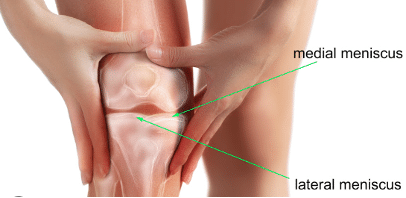
Lateral Meniscus tear (15.4%)
Symptoms
- Joint line tenderness
- Pain from “inside the knee” during drop kneeing or other climbing specific movements.
- More on the lateral(outer) side
- See above for location of the pain
Injury From a High Step2
Medial meniscus tear (50%)
Symptoms
- Joint line tenderness
- Pain from “inside the knee” during the extremes of knee flexion/extension or other movements.
- More on the medial(inner) side

LCL tear (6%)
Symptoms
- Joint line tenderness
- Pain on the lateral aspect(outside) of the knee during specific movements
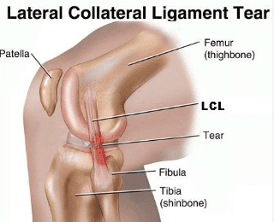
Patellar Dislocation (6%)6
Symptoms
- Heard a “pop” at the time of injury
- Feelings of instability in the knee during certain movements
- Pushing patella laterally(towards the outside) outs may result in pain or instability(see image below)
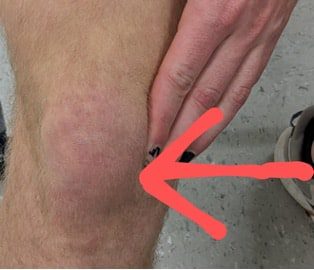
Injury From A Fall2
ACL tear (41%)7
Symptoms
- Popping sensation at time of injury
- Feelings of instability or giving away
- Swelling
- May be painful to weight bear
- More likely if all was on one leg and experienced the knee going inwards or twisting
Medial Meniscus tear (11.8%)
Symptoms
- Joint line tenderness
- Pain from “inside the knee” during certain movements. More on the medial(inner) side

REHAB
Time Frames depend on severity of injury. If your injury is more/less severe, you may spend a different amount of time in each rehab section. General recommendations have been given for the most common injuries included in the article.
MEDIAL MENISCUS8
*Some meniscus tears heal well without surgery, but others may not heal as well. If your injury is having a significant impact on your quality of life or climbing and fails to improve from conservative measures including supervised physical therapy, then you may want to consider surgery as a last resort. A licensed physical therapist will be able to help with progression through rehab phases*
Phase 19
- Ice, compression, and elevation to manage swelling/pain as needed.
- Completely avoid aggravating motion
- Crutches if walking results in increased pain
- Bend and extend the knee through non-painful ranges
- Isometric quad sets
Phase 2
- Return to pain-free climbing on vertical terrain
- Continue with bending/extending the knee
- Glute bridges
- Squats to 90 degrees (if MOI was high-step, then only go halfway to 90 and slowly progress deeper)
Phase 3
- Start with climbing-specific hamstring strengthening as seen here:
- Single-leg glute bridges: see the progression
- Progress to placing the heel on an elevated surface
- Single leg glute bridge slide with pillowcase as seen below
- Progress to taking the other leg off the ground
- Start Climbing on steeper terrain but avoid MOI
Phase 4
- If MOI = heel hooks: begin incorporating easier heel hooks into climbing
- If MOI = high-step: begin practicing rocking over the foot but don’t allow the knee to go much past the toes
- Continue with the above exercises
Phase 5
- Start to return to the previous level of climbing slowly increasing the intensity of the movements associated with your MOI
IT BAND STRAIN
*A licensed Physical therapist will be able to help assist with the progression through rehab phases.*
Phase 1
- Ice, Compression, and elevation to manage swelling/pain as needed
- Crutches if walking results in an increase in pain
- Bend and extend the knee through non-painful ranges
Phase 2
- Return to climbing on easy vertical terrain
- Continue to go through the range of motion within a pain-free range
- Monster Walks w/ resistance band (Click here for video)
- Glute Bridges
Phase 3
- Return to climbing on steeper terrain but avoid heel hook
- Start with climbing-specific hamstring strengthening as seen here (click for video)
Phase 4
- Single-leg glute bridges: see progression click here
- Progress to placing the heel on the elevated surface
- Single-leg glute bridge slide with pillowcase as seen here
- Progress to taking the other leg off the ground
- Start incorporating easier heel hooks into climbing sessions
Phase 5
- Single-leg glute bridge
- Continue with the glute bridges exercises and progressively increase the intensity of heel hooking
- Slowly return to your prior level of climbing over the next few weeks at your own pace.
LCL TEAR
*The timeline will be different for everyone. If you have no pain walking or during daily activities. You can likely skip the non-weight bearing and progress through the stages more quickly. A licensed Physical therapist will be able to help assist with the progression through rehab phases.*
Phase 110
- Ice, Compression, and elevation to manage to swell
- Knee hinge brace locked at 30 degrees for 6 weeks except during rehab
- Crutches, only partially using the injured leg
- During rehab go through a range of motion from 30-90 degrees of knee flexion
Phase 2
- Continue the above exercises but allow for full extension of the knee with ROM
Phase 3
- Switch to a medial unloader brace to be worn at all times if putting weight on the leg.
- Return to climbing on vertical and easy terrain
- Go through the range of motion within pain-free range
- Start squatting and step-ups on stairs using
- Glute Bridges
Phase 4
- Continue to go through a pain-free range of motion
- Return to climbing on steeper terrain but avoid heel hooks
- Start with climbing-specific hamstring strengthening as seen here:
Phase 5
- Single leg glute bridges: see progression here
- Single leg glute bridge slide with pillowcase as seen here
- Progress to taking the other leg off the ground
Phase 6
- Begin incorporating easier heel hooks in your climbing and build up to more strenuous heel hooks
Phase 7
- Continue with the glute bridges exercises and progressively increase the intensity of heel hooking
ACL TEAR
*If you suspect an ACL tear please consult a medical professional for assistance with your rehabilitation.*
About The Author
Tim Worley is a Doctor of Physical Therapy Student at University of Texas at El Paso. He is an avid climber and boulderer and tries to go climbing outside any chance that he gets.
Disclaimer: This article serves as a general recommendation and is by no means a substitute to personalized care. If you are experiencing any of the above signs and symptoms, please consider consulting a physical therapist for high-quality care.
References
- Asakawa D, Sakamoto M. Retrospective survey of sport climbing injuries and self-care in the gunma prefecture. J Phys Ther Sci. 2019;31(4):332-335. doi: 10.1589/jpts.31.332.
- Lutter C, Tischer T, Cooper C, et al. Mechanisms of acute knee injuries in bouldering and rock climbing athletes. Am J Sports Med. 2020;48(3):730-738. https://doi.org/10.1177/0363546519899931. doi: 10.1177/0363546519899931.
- The do’s and dont’s for IT band syndrome. Rx Sports Recovery Web site. https://www.rxsportsrecovery.com/journal/2017/9/14/the-dos-and-donts-for-it-band-syndrome)p. Updated 2017.
- Meniscus tears. EastSide Medical Group Web site. https://eastsidemedicalcleveland.com/knee-pain/meniscus-tears/.
- Lateral collateral ligament . Active Care Physiotherapy Clinic Web site. https://sites.google.com/site/activecarephysiotherapyclinic/lcl-injury.
- Hayat Z, El Bitar Y, Case JL. Patella dislocation. In: StatPearls. Treasure Island (FL): StatPearls Publishing LLC; 2022.
- ACL injury. Mayo Clinic, Mayo Foundation For Medical Education and Research Web site. https://www.mayoclinic.org/diseases-conditions/acl-injury/symptoms-causes/syc-20350738. Updated 2022.
- Logerstedt DS, Scalzitti DA, Bennell KL, et al. Knee pain and mobility impairments: Meniscal and articular cartilage lesions revision 2018. J Orthop Sports Phys Ther. 2018;48(2):A1-A50. doi: 10.2519/jospt.2018.0301.
- Conservative management of the patient with a meniscal tear. The Brigham and Women’s Hospital, Inc., Department of Rehabilitation Services. 2014.
- Nonoperative isolated lcl tear rehabilitation protocol . . . https://www.akohfootanklesports.com/pdfs/non-operative-isolated-lcl-tear-rehabilitation-protocol.pdf.
- Disclaimer – The content here is designed for information & education purposes only and the content is not intended for medical advice.

